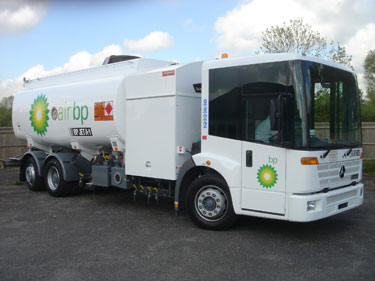 |
|
|
|
|
|
|||
|
By Jim Douglas |
||||
 |
April 25, 2010 - The Environmental Protection Agency (EPA) has formally begun the regulatory process required by the Clean Air Act that may ultimately result in standards mandating the industry’s transition to unleaded aviation gasoline (avgas). The EPA has issued an advance notice of proposed rulemaking (ANPR) which is a key opportunity for the general aviation (GA) community to provide comment regarding this possible new environmental standard and into the development of a plan for identifying, evaluating, and ultimately transitioning to an unleaded fuel. This is particularly important given the technical complexity and safety implications of removing lead from aviation gasoline since there is not a high-octane replacement unleaded avgas available today that meets the requirements of the entire GA fleet. |
|||
|
In the ANPR, the EPA recognized the complexity involved in identifying
and safely transitioning to an alternative gasoline, stating,
“Converting in-use aircraft/engines to operate on unleaded aviation
gasoline would be a significant logistical challenge, and in some cases
a technical challenge as well.”
The agency also acknowledged that a joint effort will be critical in the
likely case that engine modifications will need to be developed and
certified. The EPA
continued, “Given the potentially large number of affected aircraft and
the potential complexities involved, a program affecting in-use aircraft
engines would need careful consideration by both EPA and FAA and the two
agencies would need to work together in considering any potential
program affecting the in-use fleet.”
The Aircraft Owners and Pilots Association (AOPA), the Experimental
Aviation Association (EAA), the General Aviation Manufacturers
Association (GAMA), the National Air Transportation Association (NATA),
and the National Business Aviation Association (NBAA) have devoted more
than 20 years of research and development to identifying a viable
alternative to the 100 “low lead” avgas formulation used today by most
piston-powered aircraft.
The industry stakeholders look forward to continuing their work with the EPA and the FAA on establishing a realistic standard to reduce lead emissions from GA aircraft along a transition timeline which balances environmental benefit with aviation safety, technical feasibility and economic impact upon the GA industry. |
||||
|
In 2006, EPA
completed the Air Quality Criteria Document (AQCD) for Lead, which
critically assesses and integrates relevant scientific information
regarding the health effects of lead. EPA concluded that the latest
evidence indicates adverse health effects, most notably among children,
are occurring at much lower levels than previously considered.
In 2008, EPA
decreased the level of the primary National Ambient Air Quality Standard
(NAAQS) for lead from 1.5 micrograms per cubic meter (ug/m3)
to 0.15 ug/m3
in order to provide increased protection for children and other at-risk
populations against an array of adverse health effects, most notably
neurological effects in children, including neurocognitive and
neurobehavioral effects. |
| ©AvStop
Online Magazine
Contact
Us
Return To News
|
|

